Despite spring storms being well-known for causing roof damage, winter can also affect your home’s uppermost layer. When temperatures go down and snow starts to fall, one of the main things to watch out for is the formation of ice dams. Fortunately, it is possible to prevent ice dams proactively and extend your roof’s lifespan. Why do you need Ice Damming Snow Removal Services?
What is an ice dam?
An ice dam is a ridge or barrier of ice that forms along the eaves of a roof, usually in cold winter weather. It occurs when heat from the inside of a building escapes into the attic and warms the roof, causing snow on the upper part of the roof to melt. As this melted snow runs down the roof, it reaches the colder eaves where it refreezes due to the lower temperature, creating a dam of ice.
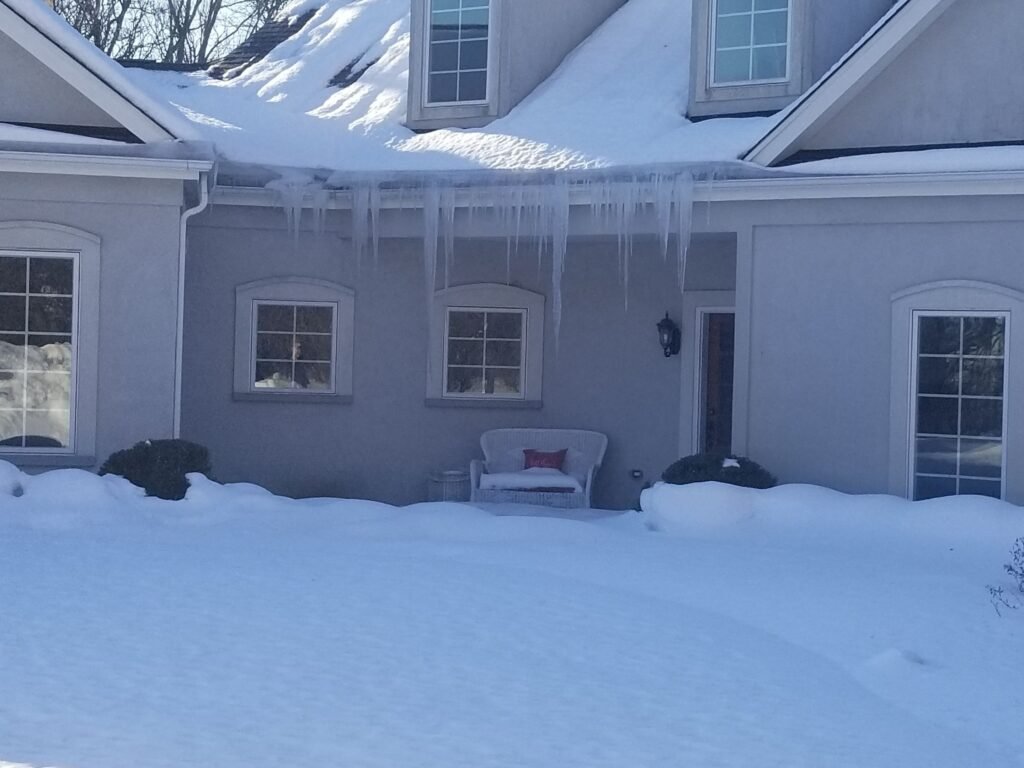
This ice dam can trap additional melting snow and prevent it from properly draining off the roof, potentially leading to water seeping under shingles and causing damage to the roof, walls, and ceilings. Ice dams can be a significant issue in regions with cold winters and heavy snowfall.
What leads to the formation of ice dams?
Factors like how much heat a house loses, how much snow there is, and how cold the outside temperature is, are all involved in making an ice dam. To form ice dams, the roof must be covered in snow and have higher sections of its outer surface above 32 degrees Fahrenheit (freezing), with lower ones below that temperature. These temperatures require a prolonged period of time to develop. The outside temperatures must also be below freezing to have a section of the roof below freezing.
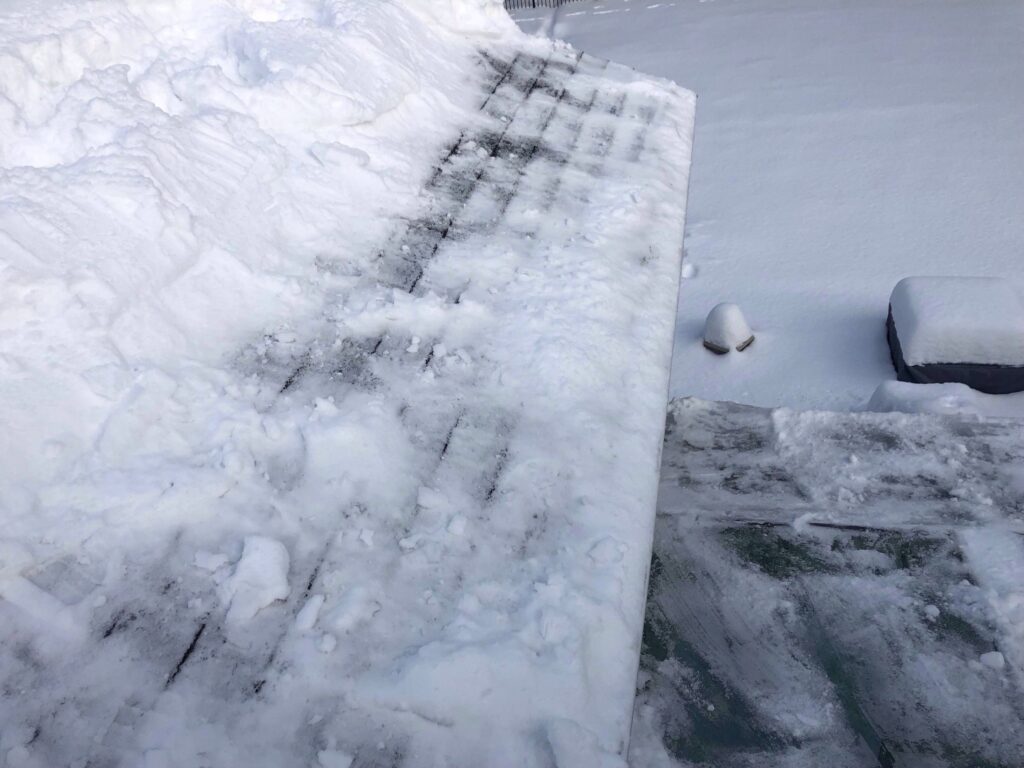
If the surface of a roof is above freezing, snow will melt. When the melted water goes down the roof, it freezes on the part of the roof that is below 32 degrees and makes an ice dam.
The dam expands as it receives snow from above, but it stays within the areas of the roof where temperatures hover around 32F. Because of this, the water above the dam backs up and stays in a liquid state. This liquid water can get into the attic space through small holes in the roof. From the attic, it is possible that it may proceed towards the exterior walls or penetrate through the ceiling insulation, thereby potentially causing staining to the finish of the ceiling. If you’re facing this issue and need assistance, consider seeking professional snow removal services to address the problem effectively.
How to prevent ice dams?
When the winter season brings heavy snow, sometimes a cold roof isn’t enough to stop ice dams from forming. These icy barriers can still occur, particularly at roof valleys where snow accumulates due to the wind. In some cases, there might be parts of your roof that are tricky to keep cold. That’s when you should consider using additional strategies and products to prevent ice dams and the damage they cause.
Regular roof maintenance services in the fall
A thorough fall roof inspection done Roofing Services can identify any damaged or missing shingles, flashing, or other vulnerable areas. Addressing these issues in advance will help to maintain a solid and secure roof structure during winter. Damaged roof components can create entry points for water, which can then freeze and contribute to ice dam formation.
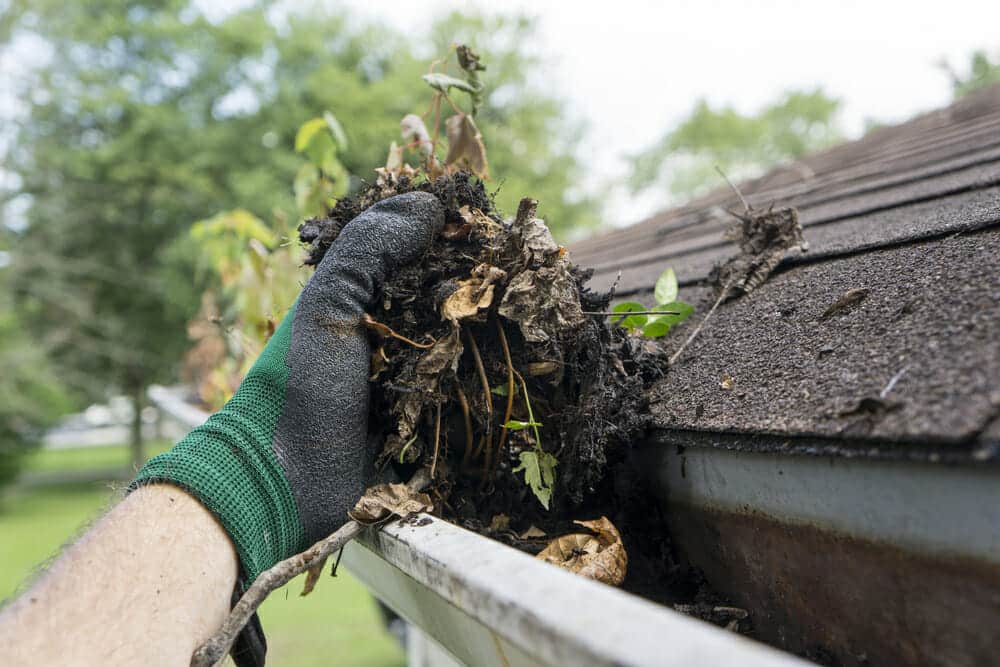
Clearing out leaves, debris, and other obstructions from your gutters and downspouts in the fall ensures that melting snow and ice can flow freely off the roof. Clogged gutters can lead to water backup, which is a significant contributor to ice dam formation. This situation can be prevented by gutter guards.
Once more, gutter guards can be of assistance in diminishing debris within your gutter and adding some difficulty to the formation of ice dams, but they won’t provide complete prevention. The most effective strategy for addressing ice dams, however, involves proactive measures during the warmer seasons. This includes not only regular gutter cleaning but also arranging a roof inspection to assess its condition before potential issues arise.
After a heavy snowfall, you can also use a snow rake to remove the snow from your roof
A snow rake is a simple tool with an aluminum scraper at the end of a telescoping pole. By pulling the snow off the roof, you prevent it from melting and creating ice dams. This method works well for single-story homes, but it’s not suitable for second-floor roofs. Be cautious not to damage the shingles, which can become brittle in cold weather. You can find snow rakes at most home centers and hardware stores in areas prone to ice dams, so it’s a good idea to get one before the snowy season begins.
When All Else Fails: Installing Heat Cables
HeatTapePro self-regulating heat cables are a great way to stop ice dams and frozen pipes. If you’ve ever had to deal with icy roofs or gutter systems during winter, you know it’s essential to have a dependable system to melt the ice. Let’s see why these cables are a smart choice for this.
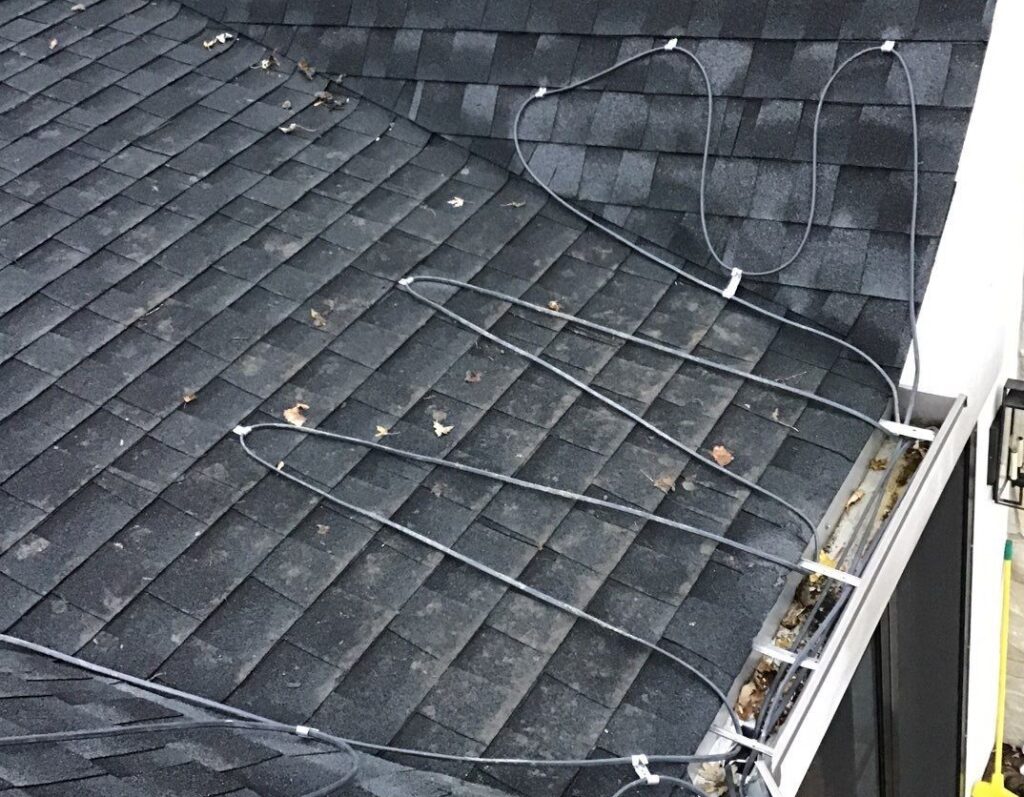
These heat cables can be used on roofs, gutters, and pipes to prevent ice. The best part is, you don’t need to adjust them yourself. They change how much energy they use based on how cold it is outside. So, even when it’s really cold, your roof and gutters stay warm without needing you to change any settings.
Not only are these cables more efficient than systems you have to control, but they also last longer. They don’t run at full power all the time, which saves energy and makes them live longer. Plus, they spread the heat evenly along the whole cable, so you don’t have to worry about some parts getting too hot and causing problems. This makes it much safer and lowers the risk of fires on your roof.
Assessing Attic Insulation and Ventilation: A Key to Winter Roof Care
Ensuring the well-being of your home during the winter months involves a range of considerations and one of the crucial aspects is the condition of your attic. Experts unanimously underscore the significance of evaluating your attic insulation, with the R-value serving as a crucial measure. According to the National Weather Service, the R-value of your attic insulation should be no less than R-30. If you reside in northern regions, an even higher value, around R-38, is preferable. The R-value represents the insulation’s ability to resist heat transfer – the higher the value, the better the insulation is at keeping your living spaces warm in the winter and cool in the summer.
It’s advisable to seek the counsel of Snow Removal Services when considering improvements in these areas. A skilled contractor can provide guidance on the most suitable insulation materials, installation techniques, and ventilation systems tailored to your specific needs.
By addressing the condition of your attic insulation and ventilation, you’re taking proactive steps to fortify your home against the rigors of winter. This not only promotes a comfortable living environment but also helps in the preservation of your roof’s integrity, making it well-prepared to withstand the challenges of the season.
Handling Existing Ice Dams
If you notice ice dam leakage and are unable to clear the snow with a rake, addressing the issue promptly is crucial to prevent further damage. Ice dams themselves may not be the primary problem, but if left unattended, they can lead to more extensive and costly roof damage over time.
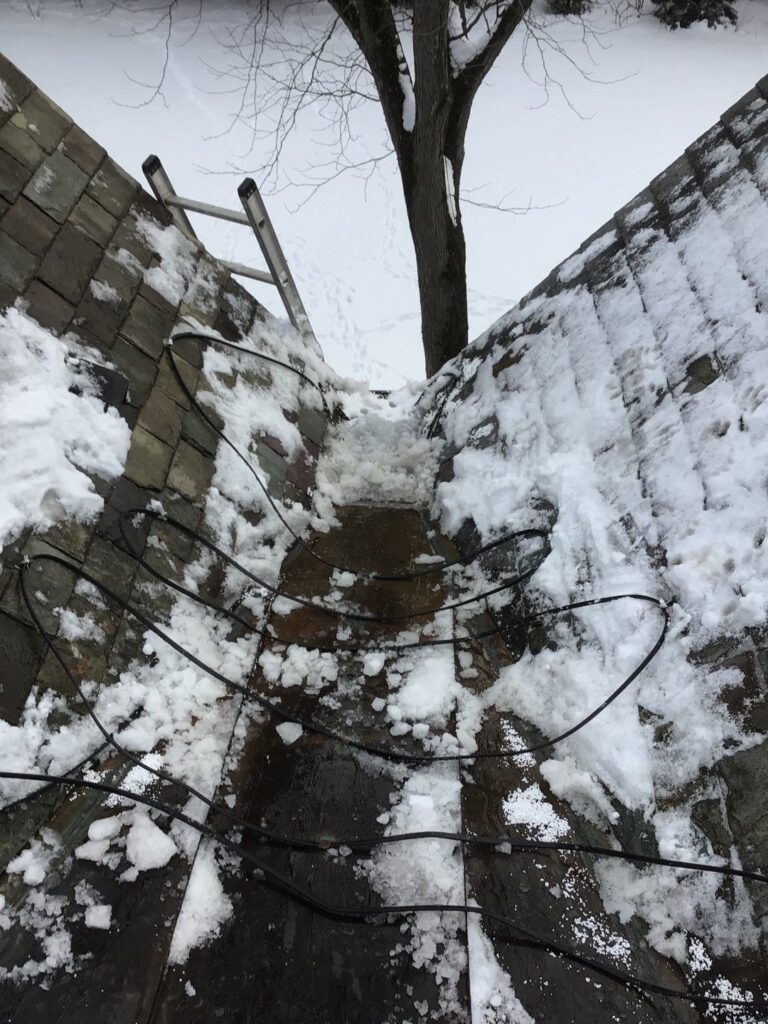
Hiring a professional roofing company or snow removal services to steam off the ice dams is the safest and most effective method. Steamers use hot water to melt the ice without harming your roofing materials. It’s essential to avoid attempting to chip away the ice with tools like a hatchet or ice pick, as this can result in shingle breakage or punctures, ultimately exacerbating the problem.



